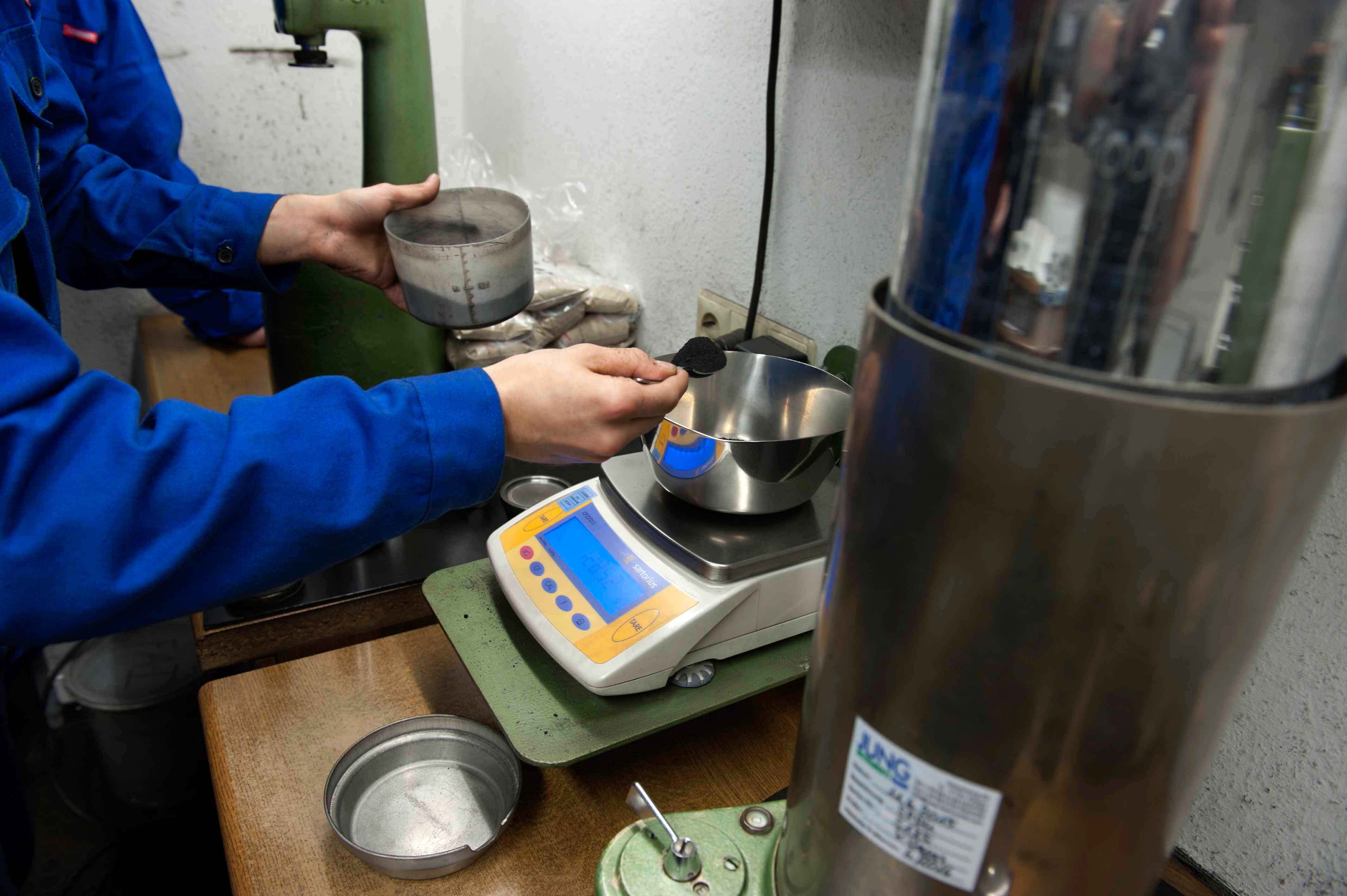Mould Sand Analysis
The tip of your tongue is more sensitive than you think…
…which is why experienced Master Casters used theirs in the past to decide whether the moulding material had the right consistency. Nowadays, our technology has advanced a bit, but the problem is the same one: one of the most important characteristics of an air-dried mould is its strength. This stands to reason: every mould is subjected to mechanical stress each time a pattern is removed, cores are inserted, or molten metal is poured into it – not to mention any additional transport or handling of the moulds during the process. And the moulds must be able to reliably maintain their shape despite all of these influences.
The sand used in moulds, bound together with bentonite, must fulfil these requirements. It must be damp enough to be formed (as anyone who has ever had a snowball fight knows); however, it must also be dry enough not to stick to the pattern, so that it doesn’t crack or tear.


The grain must be fine enough to produce an even surface, but it must not be so fine that it is insufficiently cohesive or incapable of forming a stable, large-volume mass – very fine sand will produce a smooth surface (and is therefore preferred for decorative castings), but it makes automated machine production impossible. The sand must be so densely packed that it can be formed and will cohere (hydrogen content), but must be loose enough to be permeable, in order to allow the gases that develop in the mould to escape during casting.
In order to monitor these numerous and often contradictory qualities, a number of defining variables have been defined over the years to describe the sand’s qualities; these variables can be determined with standardized testing procedures using standardized specimens to investigate the sand’s or the mould’s resistance to various stresses.
The goal of sand analysis
The goal of all of these forms of analysis is to be able to control the moulding material; this means correcting and removing the inevitable fluctuations in the mixture’s composition, and thereby the fluctuations in the material’s properties. To do so, various methods are used, including online control loops (such as water dosage, for example) and detailed lab analyses for long-term condition monitoring; the results from lab analyses can then be compared to measurement series from the production line for long-term quality monitoring. However, even this does not provide truly satisfactory quality monitoring of the moulding material; continual, permanent examinations in our sand laboratory are also necessary to check for short-term fluctuations, as well as to ensure the desired composition of the moulding sand long-term.


Permanent examinations in our sand laboratory
In order to correct and compensate for inevitable fluctuations, ideally each and every batch of castings is evaluated – starting, for example, by determining the momentary amounts of water, bentonite, and lustrous carbon (graphite) formers being added during the mixing process for the moulding compound.
Standardized round specimens (50 mm in diameter, compacted with three strokes from a pile driver as specified in the VDG-Merkblatt [VDG-Infosheet] P 38) are produced and subjected to various types of tests.
Standardized round specimens – 50 mm
- In order to test the permeability, the specimen is placed in a pipe and the amount of air is measured that penetrates through the specimen at a specified level of pressure.
- The water content is determined by the change in weight after the specimen has been dried in a furnace.
- The grain size and distribution is determined with a sieve analysis.
- The compressive strength is investigated using a pile driver; the shearing, cleavage, and wet tensile strengths are investigated using interchangeable testing tools for the same machine.
- Testing of the overall mould strength is carried out by measuring a force applied to the surface until displacement occurs. The measured force then represents the material’s resistance to indentation, which is used as a measure of the mould strength (similar to traditional hardness tests for metallic materials)

It is only when the results of all of these tests are taken together that a reliable evaluation of the complex moulding compound is possible. Part of the difficulty also consists of the fact that the composition of the moulding materials changes continually depending on how much sediment (“burnt” mould sand/clay from the layer between the air-dried mould and the casting) can be removed after unmoulding, and how much raw sand is added to the mould via core feeds.
Important is the complexity
In this context, the material used for the actual casting is irrelevant – SG cast iron or Ni-Resist makes no difference. What is important is the complexity of the cast parts: pump covers require a large amount of fresh core sand, while axle brackets or wheels can be cast almost entirely without requiring cores. Therefore, it is the spectrum of cast products or the mix of sectors involved that will influence the sand (re-)circulation.
Continuous direct quality control
These examples may give an idea of the collective difficulties of quality assurance across the board: hardly any of these influencing factors can be examined in isolation. Every little gear must mesh with its neighbour – it is only when online testing procedures are conducted parallel to production processes, and only when these parallel procedures dovetail with continuous direct quality control of individual sample parts (either destructive or non-destructive tests), can we be certain that we are producing “good” components; after all.